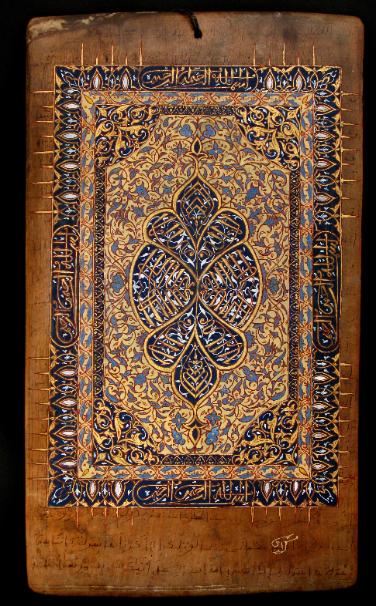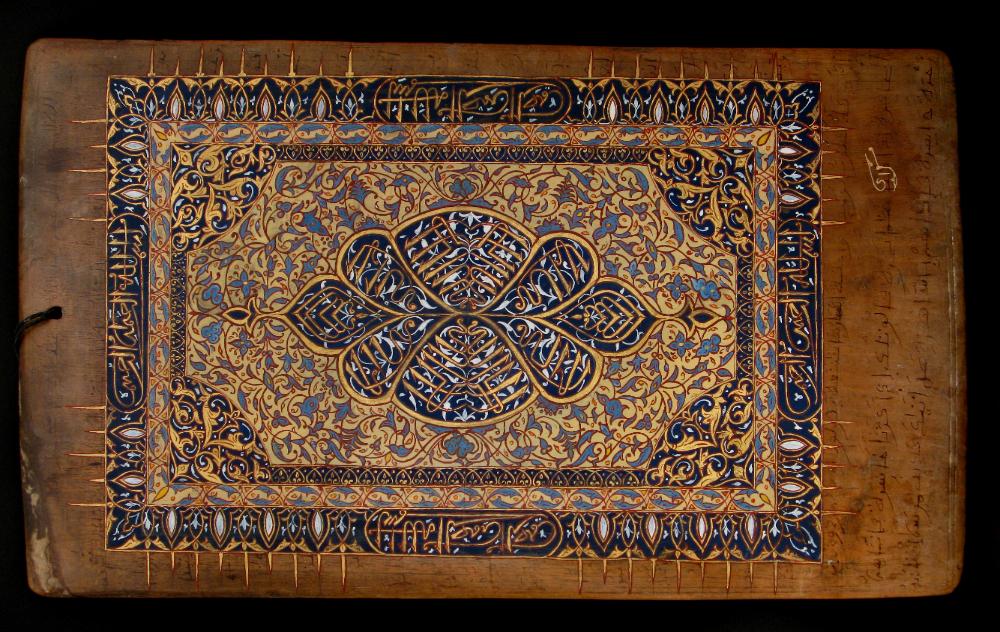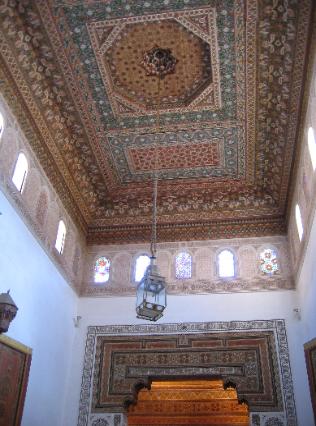
573. Moroccon Koranic Writing Board
Painted Koran Writing Board (Lawh)
Anti-Atlas, Morocco
mid-20th century
height: 57.5 cm; width: 32.6 cm
This Koran board or lawh originates from that part of the Atlas mountains near Marrakech in Morocco.
Koran boards or
lawh were used across Islamic northern Africa by pupils in Koranic schools as they learned both Arabic and Koranic text – the learning of Arabic being essential to being able to learn and recite the Koran. Students would start with the short surahs and graduate to the longer ones. Once a verse was memorised, water was used to wash the text off and the student could start again. The water used to wash the boards was treated with appropriate reverence given that it was believed to contain the words of God. It was believed to be useful in helping ward off various afflictions.
This example has a soft grey patina from the powdered pumice used to clean the boards between lessons. It retains lines of Koranic script to both sides and on one side has been finely painted with an elaborate panel of script, floral patterns and arabesques in gilt and polychrome. The artwork is typically Moroccan and was commonly employed on window shutters, ceilings and doors in wealthier homes and palaces in Morocco. (See examples below from the Bahia Palace in Marrakech, built in 1866-7 for the then Grand Vizier.)
References
Anti-Atlas lawh are illustrated in: Splendeurs du Maroc, Musee Royal de l’Afrique Central, Belgium, 1998
Inventory no.: 573
SOLD
Ask about this item
to see some examples of West African lawh.

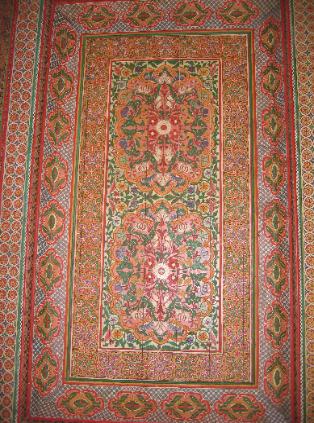
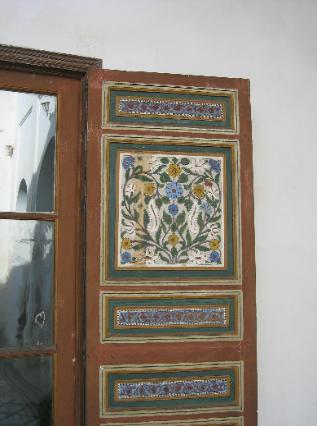
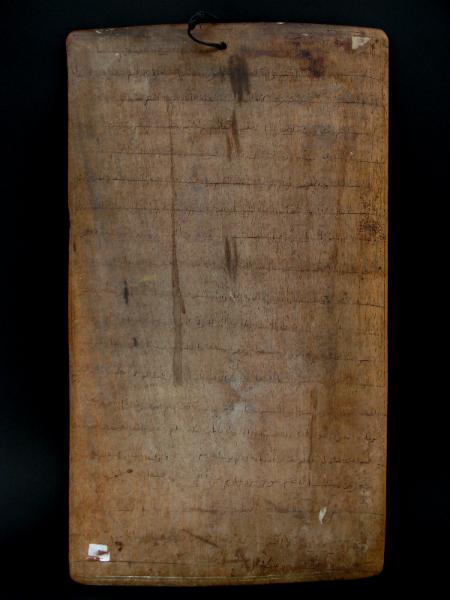
Examples of traditional Moroccan painting from the interior of Marrakech’s Bahia Palace (built in 1866-7)
